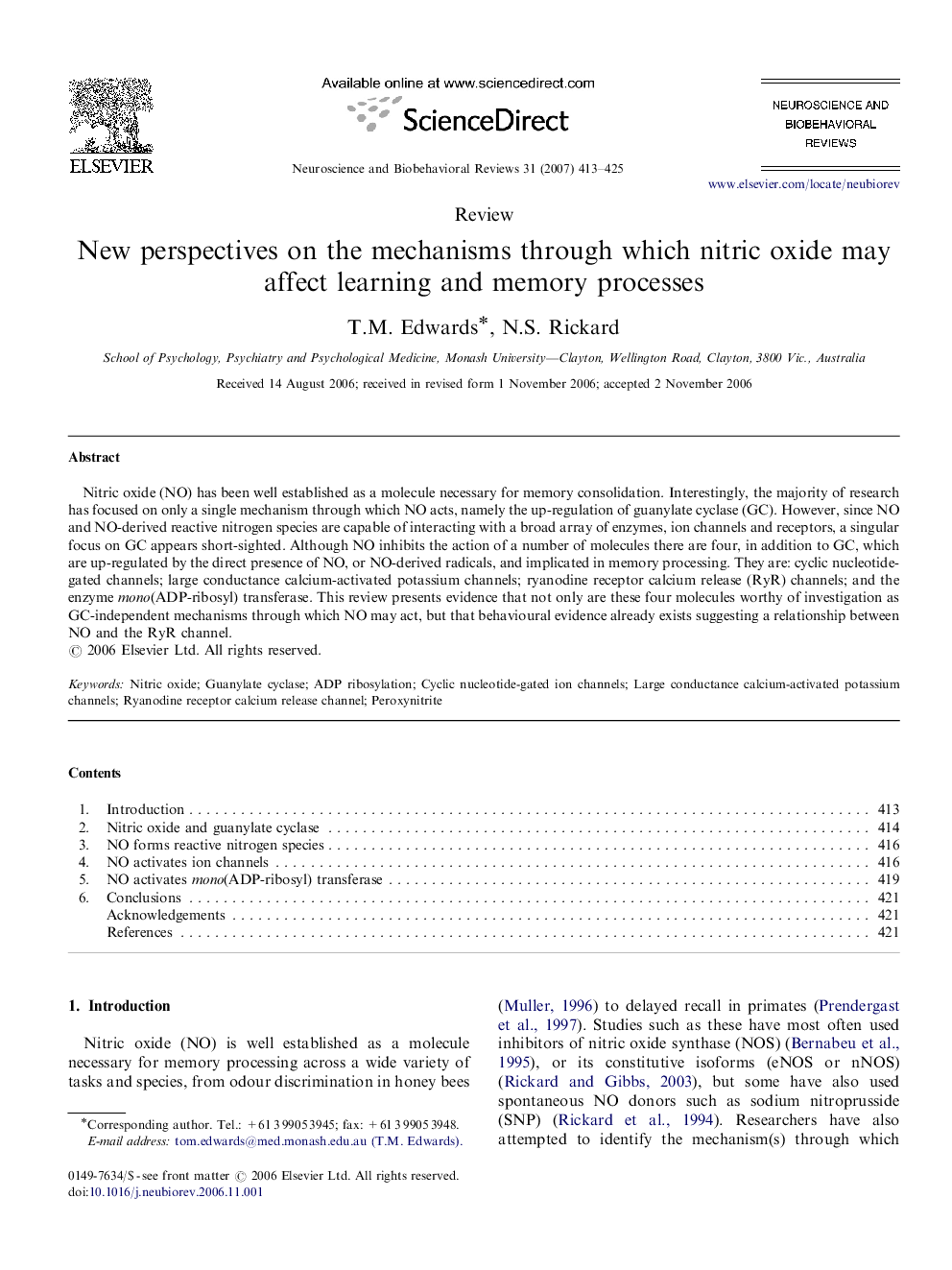| کد مقاله | کد نشریه | سال انتشار | مقاله انگلیسی | نسخه تمام متن |
|---|---|---|---|---|
| 938265 | 924621 | 2007 | 13 صفحه PDF | دانلود رایگان |

Nitric oxide (NO) has been well established as a molecule necessary for memory consolidation. Interestingly, the majority of research has focused on only a single mechanism through which NO acts, namely the up-regulation of guanylate cyclase (GC). However, since NO and NO-derived reactive nitrogen species are capable of interacting with a broad array of enzymes, ion channels and receptors, a singular focus on GC appears short-sighted. Although NO inhibits the action of a number of molecules there are four, in addition to GC, which are up-regulated by the direct presence of NO, or NO-derived radicals, and implicated in memory processing. They are: cyclic nucleotide-gated channels; large conductance calcium-activated potassium channels; ryanodine receptor calcium release (RyR) channels; and the enzyme mono(ADP-ribosyl) transferase. This review presents evidence that not only are these four molecules worthy of investigation as GC-independent mechanisms through which NO may act, but that behavioural evidence already exists suggesting a relationship between NO and the RyR channel.
Journal: Neuroscience & Biobehavioral Reviews - Volume 31, Issue 3, 2007, Pages 413–425